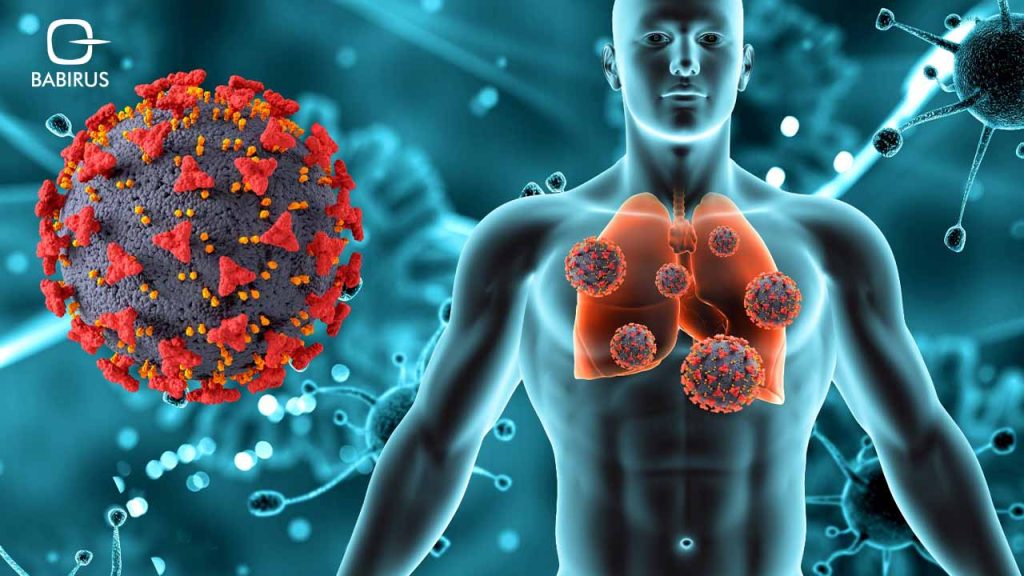What Is Tuberculosis? Symptoms, Causes, and Treatment

Tuberculosis (TB) is an ancient disease that has been affecting humans for thousands of years and is considered a major global health concern, causing millions of infections and thousands of deaths each year.
Thus, all international organizations and efforts are focusing more and more on healing and preventative campaigns to protect the general global health.
This blog aims to provide a full understanding of TB, including its causes, symptoms, diagnosis, treatment, prevention, and the ongoing efforts to combat this disease worldwide.
What Is Tuberculosis?
Tuberculosis (TB) is a bacterial infection caused by Mycobacterium tuberculosis that primarily spreads through the air when people with active TB disease cough, sneeze, talk, or spit.
Moreover, it mainly affects the lungs, but can also affect other parts of the body, and is a common and potentially life-threatening disease, especially in developing countries and in people with weakened immune systems.
On the other hand, TB disease can be latent, meaning that an individual is infected with the bacteria but does not show symptoms, or it can be active, leading to severe health complications and transmission to others.
Exploring the 3 Different Types of Tuberculosis
Understanding the diverse types of tuberculosis is essential for accurate diagnosis, appropriate treatment selection, and effective management of this infectious disease.
Next to the main types of tuberculosis, there are also other classifications based on factors such as HIV status (TB-HIV co-infection), age (pediatric TB), and latent TB infection (where individuals have been infected with M. tuberculosis but do not have an active disease).
1. Pulmonary Tuberculosis: Symptoms and Diagnosis
Pulmonary tuberculosis is the most common form of TB, it primarily affects the lungs and is transmitted through the air when an infected person coughs, sneezes, or talks.
- Symptoms of pulmonary TB may include a persistent cough, chest pain, coughing up blood or sputum, fatigue, weight loss, fever, and night sweats.
- Diagnosis of pulmonary TB often involves chest X-rays, sputum tests, and other imaging studies.
- Treatment of pulmonary TB typically involves a combination of antibiotics taken over several months.
2. Extrapulmonary Tuberculosis: Symptoms and Diagnosis
Extrapulmonary tuberculosis occurs when the infection spreads beyond the lungs to other parts of the body, as this type of TB can affect different organs and tissues such as the lymph nodes, bones, joints, kidneys, spine, and brain.
- Symptoms of extrapulmonary TB depend on the specific area affected but may include swelling, pain, neurological symptoms, and other localized Tuberculosis manifestations.
- Diagnosis of extrapulmonary TB often requires specific tests such as biopsies or imaging studies targeted at the affected area.
- Treatment of extrapulmonary TB is similar to pulmonary TB but may require longer durations or different combinations of antibiotics.
3. Drug-Resistant Tuberculosis: Causes and Treatment
Drug-resistant tuberculosis refers to strains of M. tuberculosis that are resistant to one or more of the primary antibiotics used to treat TB.
Including multidrug-resistant TB (MDR-TB) which is resistant to at least two of the most potent first-line anti-TB drugs (isoniazid and rifampicin), as well as extensively drug-resistant TB (XDR-TB) which is resistant to these drugs plus any fluoroquinolone and at least one of three injectable second-line drugs (amikacin, kanamycin, or capreomycin).
Managing drug-resistant TB is more complex and challenging than drug-susceptible TB due to limited treatment options and increased risk of treatment failure.
- Symptoms of Drug-Resistant Tuberculosis (DR-TB) include persistent cough, chest pain, fatigue, weight loss, and night sweats.
- Diagnosis of Drug-Resistant Tuberculosis (DR-TB) involves specialized laboratory tests, such as drug susceptibility testing, to identify resistance to standard tuberculosis medications.
- Treatment of Drug-Resistant Tuberculosis (DR-TB) is challenging and often requires a combination of second-line antibiotics for an extended duration, typically 18-24 months.
Recognizing Common Symptoms of Tuberculosis
The tuberculosis symptoms can vary depending on which part of the body is affected.
In pulmonary tuberculosis symptoms in lungs may include:
- A persistent cough that lasts for more than three weeks, coughing up blood or sputum.
- Chest pain.
- Weakness or fatigue.
- Weight loss.
- Fever.
- Night sweats.
In extrapulmonary tuberculosis (affecting other parts of the body), symptoms can include:
- Pain in the affected area.
- Swelling.
- Neurological symptoms if the brain is affected.
Understanding the Causes of Tuberculosis
Tuberculosis is caused by bacteria belonging to the Mycobacterium tuberculosis complex, that could spread from one person to another through tiny droplets released into the air via coughs and sneezes of an infected individual.
Moreover, factors that increase the risk of developing active TB include weakened immune systems due to conditions such as HIV/AIDS, malnutrition, diabetes, or certain medications.

Diagnosing Tuberculosis: Methods and Techniques
Early tuberculosis tests and diagnosis are vital for effective treatment and to prevent its spread to others, there are several methods and techniques used for diagnosing tuberculosis, each with its own advantages and limitations.
- Clinical Evaluation.
- Tuberculin Skin Test (TST).
- Interferon-Gamma Release Assays (IGRAs).
- Chest X-ray.
- Sputum Smear Microscopy.
- Nucleic Acid Amplification Tests (NAATs).
- Culture Testing.
- Biopsy.
3 Effective Treatment Options for Tuberculosis
The treatment of tuberculosis typically involves a combination of antibiotics to effectively kill the bacteria and prevent the development of antibiotic resistance.
Moreover, the treatment routine for tuberculosis can be complex and long, often lasting several months to over a year, depending on the type and severity of the infection, as well as the patient’s overall health condition.
However, while tuberculosis medications are essential for curing the infection, they can also cause many side effects such as liver toxicity, peripheral neuropathy, gastrointestinal disturbances, and others. Thus, regular monitoring of patients undergoing TB treatment is required to detect and manage any potential side effects promptly.
1. First-Line Drugs: Key Components of Tuberculosis Treatment
The standard treatment for tuberculosis involves a combination of several first-line drugs, that are highly effective in treating TB and are recommended by health organizations such as the World Health Organization (WHO) and the Centers for Disease Control and Prevention (CDC).
The first-line drugs commonly used in tuberculosis treatment include:
- Isoniazid (INH):
Isoniazid is a key component of tuberculosis treatment regimens, as it is highly effective in killing the bacteria that cause TB.
- Rifampin (RIF):
Rifampin is another essential drug used in the treatment of tuberculosis, it works by inhibiting the growth of Mycobacterium tuberculosis.
- Pyrazinamide (PZA):
Pyrazinamide is often included in the initial phase of tuberculosis treatment to effectively eliminate the bacteria.
- Ethambutol (EMB):
Ethambutol is another first-line drug that is used in combination with other medications to treat TB.
These first-line drugs are typically used in combination to form a multidrug regimen, which is vital for preventing the development of drug-resistant strains of Mycobacterium tuberculosis.
2. Managing Drug-Resistant Tuberculosis
In cases where Mycobacterium tuberculosis shows resistance to first-line drugs, second-line medications are used.
As drug-resistant TB requires longer and more complex treatment regimens, often involving multiple antibiotics that are less effective and may have more severe side effects than first-line drugs.
3. Ensuring Adherence to Tuberculosis Treatment
To ensure treatment adherence and reduce the risk of medication non-compliance, healthcare providers often implement directly observed therapy (DOT) for patients undergoing tuberculosis treatment.
This approach involves healthcare workers directly observing patients as they take their medications to ensure proper adherence to the prescribed regimen.
Finally,
Tuberculosis is a serious infectious disease that requires effective diagnosis and appropriate treatment to prevent its spread and complications, thus, understanding its causes, diagnostic methods, and treatment options is important in managing this global health concern.
Get in touch with us to know more about our in vitro diagnostic for tuberculosis.
